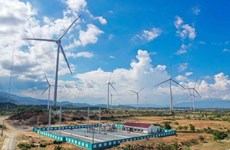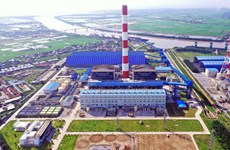Protest to WWF over tra-fish
There is no evidence to prove tra fish affect the habitat for other fish due to feed or medicines used in raising.
There is no evidence to prove that tra or the pangasius fish pollute and
badly affect the habitat for other fish due to fish food, veterinary
medicines or chemicals used in Vietnam ’s tra raising industry.
The Vietnam Association of Seafood Exporters and Producers (VASEP) made the comment while rejecting the World Wildlife Funds (WWF)'s decision to put the fish on the Red List and recommending global consumers to choose other aquatic products instead of tra fish.
The Deputy Director of the Directorate of Fisheries under the Ministry of Agriculture and Rural Development, Pham Anh Tuan, also disagreed with the fund’s 2010 seafood consumption report, saying that the announcement would cause many difficulties for Vietnam 's tra industry and would adversely affect global consumer trends.
"The WWF's information is incomplete as the fund reached its decision using one-sided and incorrect standards on an unfounded scientific basis," he said, adding that this would also impact on international trade relations.
He added that the information was only released by the fund's branches in European countries such as Germany , Austria , Switzerland , Belgium , Norway and Denmark , not the global WWF.
According to VASEP, Vietnamese tra fish are raised in ponds and meet the food safety standards and the quality management certification system SQF 1000 CM, owned and operated by the US Food Marketing Institute (FMI).
These standards satisfy the strict food safety requirements in the US and many other nations, as well as the demanding needs of consumers in different markets, said VASEP.
Vietnamese tra fish processing and exporting businesses have always been updated with the latest information on food safety management systems and adopted a production chain to ensure the quality of their products from "from farm to fork."
According to VASEP, Vietnamese catfish are exported to over 120 countries and territories around the world and have met the stringent standards set by the European Union, Australia, the US and Japan./.
The Vietnam Association of Seafood Exporters and Producers (VASEP) made the comment while rejecting the World Wildlife Funds (WWF)'s decision to put the fish on the Red List and recommending global consumers to choose other aquatic products instead of tra fish.
The Deputy Director of the Directorate of Fisheries under the Ministry of Agriculture and Rural Development, Pham Anh Tuan, also disagreed with the fund’s 2010 seafood consumption report, saying that the announcement would cause many difficulties for Vietnam 's tra industry and would adversely affect global consumer trends.
"The WWF's information is incomplete as the fund reached its decision using one-sided and incorrect standards on an unfounded scientific basis," he said, adding that this would also impact on international trade relations.
He added that the information was only released by the fund's branches in European countries such as Germany , Austria , Switzerland , Belgium , Norway and Denmark , not the global WWF.
According to VASEP, Vietnamese tra fish are raised in ponds and meet the food safety standards and the quality management certification system SQF 1000 CM, owned and operated by the US Food Marketing Institute (FMI).
These standards satisfy the strict food safety requirements in the US and many other nations, as well as the demanding needs of consumers in different markets, said VASEP.
Vietnamese tra fish processing and exporting businesses have always been updated with the latest information on food safety management systems and adopted a production chain to ensure the quality of their products from "from farm to fork."
According to VASEP, Vietnamese catfish are exported to over 120 countries and territories around the world and have met the stringent standards set by the European Union, Australia, the US and Japan./.












